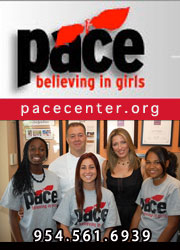5 Ways High-Performance Organizations Make Meetings Effective

Every organization has to figure out how to make meetings productive. It’s a complex challenge. To be effective, each meeting needs to engage the individual talents of the people involved, work to achieve the organization’s specific goals for the moment, and do so in a way that’s both culturally relevant and contextually sensitive to the world around it. Not an easy feat.
It can be tempting to shy away from the task. Instead of embracing this complexity, many leaders fall back on simple blanket rules that no one really follows—like the leader that declared all meetings in the company could last no more than 20 minutes. Others delegate responsibility for success to others, even though they themselves are the most frequent meeting attendees. Many leaders claim that meetings are a waste of time, and therefore not worth the effort it would take for the organization to make them work well.
These are common traps that keep an organization locked in a cycle of underperforming meetings and endemic mediocrity.
Here are 5 ways high-performing organizations avoid that fate:
- Set clear expectations for all meetings.
Meeting norms, ground rules, guidelines - these set the foundation for building an effective meeting habit. They often include things like use of an agenda and keeping meetings on time. Whatever your rules, the leadership team must follow them. The way the leadership group meets sets the real standard everyone else follows. - Document and share meeting results.
Fear of missing out (FOMO) compels people to attend meetings they shouldn't. Organizers don’t want to leave people out, so they invite everyone who might possibly want to weigh in. Having irrelevant people in the room de-energizes the conversation and disrupts productivity.
Documented meeting results are the fastest and easiest way to combat meeting FOMO. Before the meeting, document the meeting purpose and desired outcomes clearly. Then, send out written meeting results afterward. When people can see in advance what a meeting is for, then see afterward what happened, they can decide whether they need to attend. This keeps meetings more focused, and it keeps everyone more productive.
- Define “The Way” to meet for all core processes.
There are 16 different types of business meetings, and each has a purpose. A regular team meeting is good for confirming progress and identifying problems, but it’s a lousy place to make a big decision. Big decisions demand a dedicated decision-making meeting. Similarly, the initial meeting with a prospective client (or funder) should look very different from the meeting where you ink the deal. Each of these pivotal meetings can be optimized to drive the results your company needs.
High-performance organizations know the type of meetings they need to run and how to run each one well. Each meeting gets a name and becomes “the way” that kind of work gets done. For example, the team's check-in meeting becomes “the huddle”. The meeting to impress prospective clients early in the sales cycle becomes a “services briefing.” Anything called simply a “meeting” isn't specific enough.
- Train everyone.
Leaders spend up to 80% of their work day in meetings, and yet many have never received meeting training. Meetings aren’t just conversations with lots of people at work; there are skills and techniques to learn that radically improve meeting results.
High-performance organizations provide skills training to people leading meetings. They also train everyone how to participate in the meetings defined as “the way” to get their job done. Meetings represent an enormous salary investment, and high-performance organizations ensure their people get a good return on that investment.
- ABL: Always be learning!
Once they have “the way” to meet, the organization can experiment. What happens when we meet on Monday instead of Wednesday? If we tweak the process, can we make decisions faster?
High-performance organizations have the process stability they need in order to run conclusive experiments and continuously improve their meeting practices.
Bad meetings are not inevitable. Quite the opposite: meetings can be a powerful embodiment of your company’s culture and a driver of performance, when designed and run with intention. And the best news: you get to learn from the examples set by high-performance organizations that have already conquered this design challenge. When it comes to meeting design, the adage holds true: Well-stolen is half done!
J. Elise Keith is the co-founder of Lucid Meetings and the author of Where the Action Is: The Meetings That Make or Break Your Organization. For more information, please visit, www.lucidmeetings.com and connect with her on Twitter, @EliseID8.
Business Directory
![]()
Click Here to Claim or Submit Your Business Listings for Free!
























